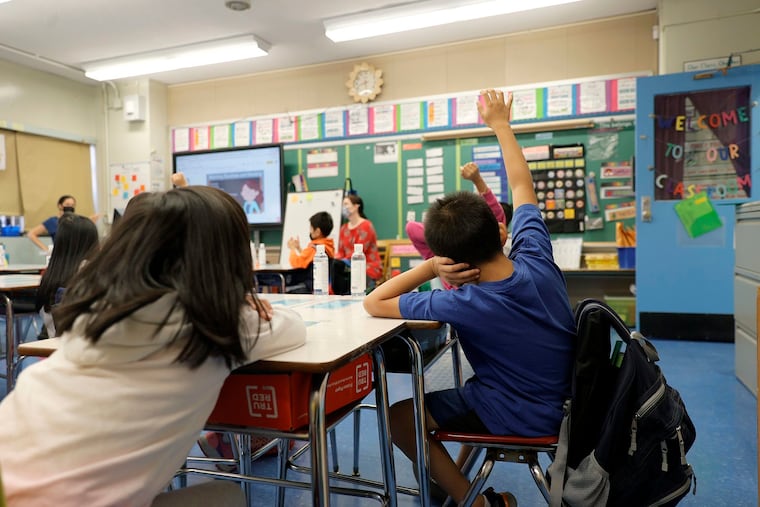CDC finds coronavirus testing of exposed children in schools can safely replace quarantine
The CDC released two studies that show the effectiveness of what's known as "test-to-stay." School districts across the country have tried this strategy, though it is not widely used.

Students who have been exposed to the coronavirus can safely continue in-person learning if they are regularly tested for the virus at school, avoiding disruptive at-home quarantines, the Centers for Disease Control and Prevention said Friday.
The CDC released two studies that show the effectiveness of what's known as "test-to-stay." School districts across the country have tried this strategy, though it is not widely used.
"These studies demonstrate that test-to-stay works to keep unvaccinated children in school safely," CDC Director Rochelle Walensky told reporters Friday. She called it "a promising and now proven practice."
Typically, students who are deemed close contacts of someone who tests positive for the virus are sent home to quarantine, to make sure that people who may be carrying the virus, even without symptoms, do not infect others. The CDC studied test-to-stay alternative programs in Lake County, Ill., and Los Angeles County.
"Test-to-stay is an encouraging public health practice to help keep our children in school," Walensky said.
Quarantines of students have been controversial because they interrupt learning as schools are laboring to make up for months of often substandard remote education. They also force many parents to scramble for child care at the last minute. With positive cases rising, the number of children in quarantine has also been climbing quickly.
Education Secretary Miguel Cardona welcomed the news, particularly in light of evidence of the harm caused by remote schooling. "Schools across the country must do everything possible to keep students safe and ensure that they are able to access high-quality, in-person instruction safely in their schools," he said Friday.
But test-to-stay requires significant resources. There is a shortage of the rapid tests used by schools. And these programs require school personnel to administer the tests, something not every school district is able to muster. Twelve states have create policies that allow test-to-stay programs, the CDC said: Illinois, Maine, Massachusetts, Michigan, Missouri, New Mexico, Oregon, Pennsylvania, Rhode Island, Utah, Vermont and Washington state. Districts in other states may still have programs created on their own.
Walensky said CDC would update its materials to help schools and parents implement this approach. However, in the face of rising case counts and concerns that all districts cannot mount a test-to-stay program, the agency opted against updating its formal guidance to schools to recommend a switch to test-to-stay.
That guidance still recommends that unvaccinated students who come into close contact with a person who has the virus should quarantine for seven to 14 days after exposure.
The two new studies, published in the CDC's Morbidity and Mortality Weekly Report, looked at how test-to-stay was implemented this fall.
In both cases, Walensky noted, students wore masks. Close contacts of the people who tested positive were monitored for symptoms and told to stay home if they became sick. Contacts who came back to school were regularly tested - at least twice over the seven days after exposure.
In Los Angeles County, about half off the 78 school districts, which include 21 percent of the county's schools, used test-to-stay instead of quarantine this fall. In those schools, there were 20 outbreaks identified but transmission was no higher than before the program was adopted.
Students in county schools using quarantine, including the largest district, Los Angeles Unified, lost a total of more than 92,000 in-person school days, where students in test-to-stay programs lost none.
The test-to-stay program is just now being rolled out in Oregon but is already popular with districts, said Jim Green, executive director of the Oregon School Boards Association.
“We’ve had to quarantine kids for up to 14 days,” he said. “Given everything that’s gone on in the pandemic is that what’s best for kids? Do you want kids out of school just because they’ve come in contact with someone with covid? If we can do a rapid test and show they are negative and keep them in school, that’s our goal.”